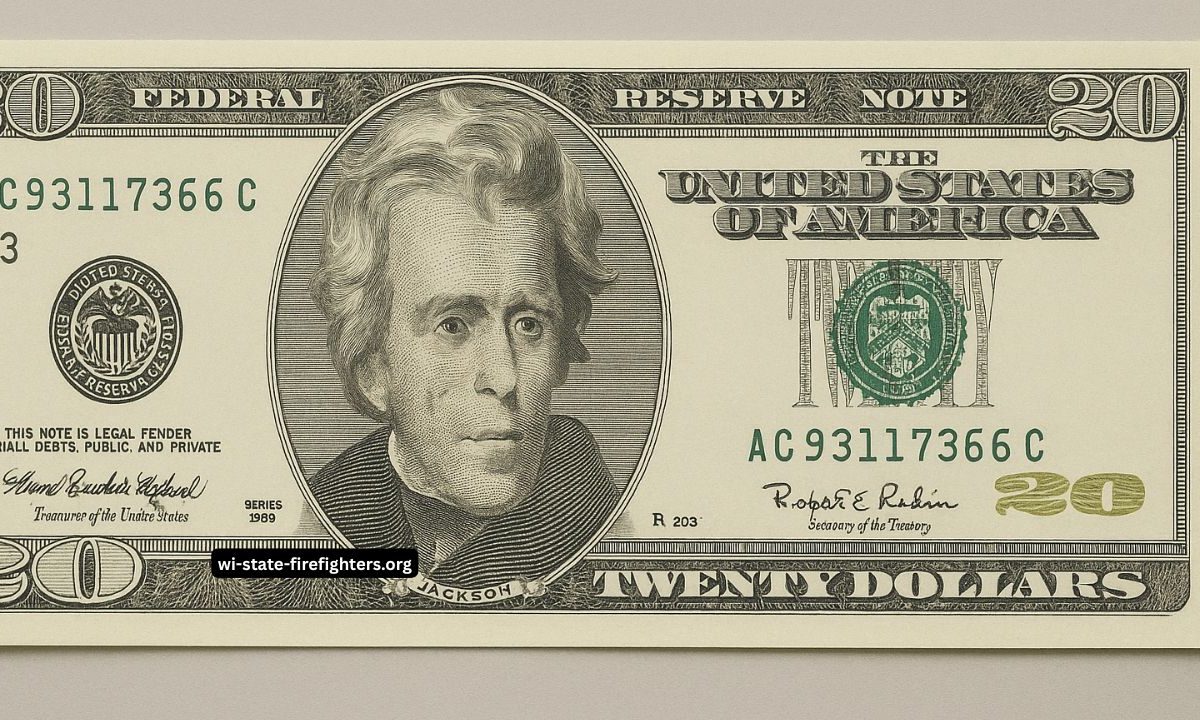In a remarkable event that has captivated currency collectors and enthusiasts alike, a rare 1996 $20 bill fetched an astonishing $22,000 at a 2025 auction.
This significant sale underscores the immense value that certain banknotes can attain due to unique characteristics and historical significance.
What Makes This 1996 $20 Bill So Valuable?
The 1996 series of the $20 Federal Reserve Note introduced several security features to combat counterfeiting, including:
- Color-shifting ink: The numeral “20” in the lower right corner on the front of the note changes color when tilted.
- Watermark: A faint image of President Andrew Jackson is visible from both sides when held up to light.
- Security thread: Embedded vertically to the left of the portrait, this thread glows green under ultraviolet light and is imprinted with “USA TWENTY” and a small flag.
- Microprinting: Small, intricate text such as “THE UNITED STATES OF AMERICA” is printed around the portrait and elsewhere, requiring magnification to read.
While these features were standard for the series, the particular note that sold for $22,000 possessed unique attributes that set it apart.
Key Features of the $22,000 Note
The extraordinary value of this specific 1996 $20 bill can be attributed to a combination of rare features:
- Serial Number: The note bore a low serial number, indicating it was among the first printed in its series. Low serial numbers are highly sought after by collectors.
- Star Note: It was a star note, signifying it replaced a misprinted note during production. Star notes are rarer than regular notes and are denoted by a star symbol at the end of the serial number.
- Printing Error: The bill featured a misalignment error, where the front and back prints were not perfectly aligned—a rarity that significantly increases a note’s value.
- Uncirculated Condition: The note was in uncirculated condition, meaning it had never been used in transactions and retained its original crispness.
Comparative Analysis of Rare 1996 $20 Bills
To understand the significance of this sale, let’s examine a comparison of various rare 1996 $20 bills and their values:
| Feature | Description | Estimated Value |
|---|---|---|
| Standard Circulated Note | Common, used in regular transactions | $20 |
| Uncirculated Note | Pristine condition, no signs of wear | $30 – $50 |
| Star Note | Replacement note with a star symbol in serial number | $50 – $100 |
| Low Serial Number | Serial numbers like 00000001 to 00000100 | $100 – $500 |
| Printing Error (Misalignment) | Misprints where front and back are misaligned | $500 – $1,500 |
| Combination of Above Features | Star note with low serial number and printing error | $5,000 – $22,000 |
Why Collectors Value Such Notes
Collectors place high value on banknotes that are rare due to production anomalies, limited circulation, or unique features.
The convergence of multiple rare attributes in a single note exponentially increases its desirability and market value.
The sale of a 1996 $20 bill for $22,000 in 2025 highlights the extraordinary value that certain banknotes can attain due to unique features and pristine condition.
Collectors and enthusiasts should be vigilant in examining their currency, as hidden treasures might be lurking in plain sight.
FAQs
How can I determine if my 1996 $20 bill is valuable?
Examine the serial number for low numbers or star symbols, check for any printing errors, and assess the condition of the note. Consulting with a currency appraisal expert can provide a more accurate valuation.
What is a star note, and why is it significant?
A star note is a replacement for a misprinted or damaged note during production, identified by a star symbol at the end of the serial number. They are produced in smaller quantities, making them rarer and more valuable to collectors.
Does the condition of the bill affect its value?
Absolutely. Uncirculated notes, which show no signs of wear, are more valuable than circulated ones. The better the condition, the higher the potential value.

